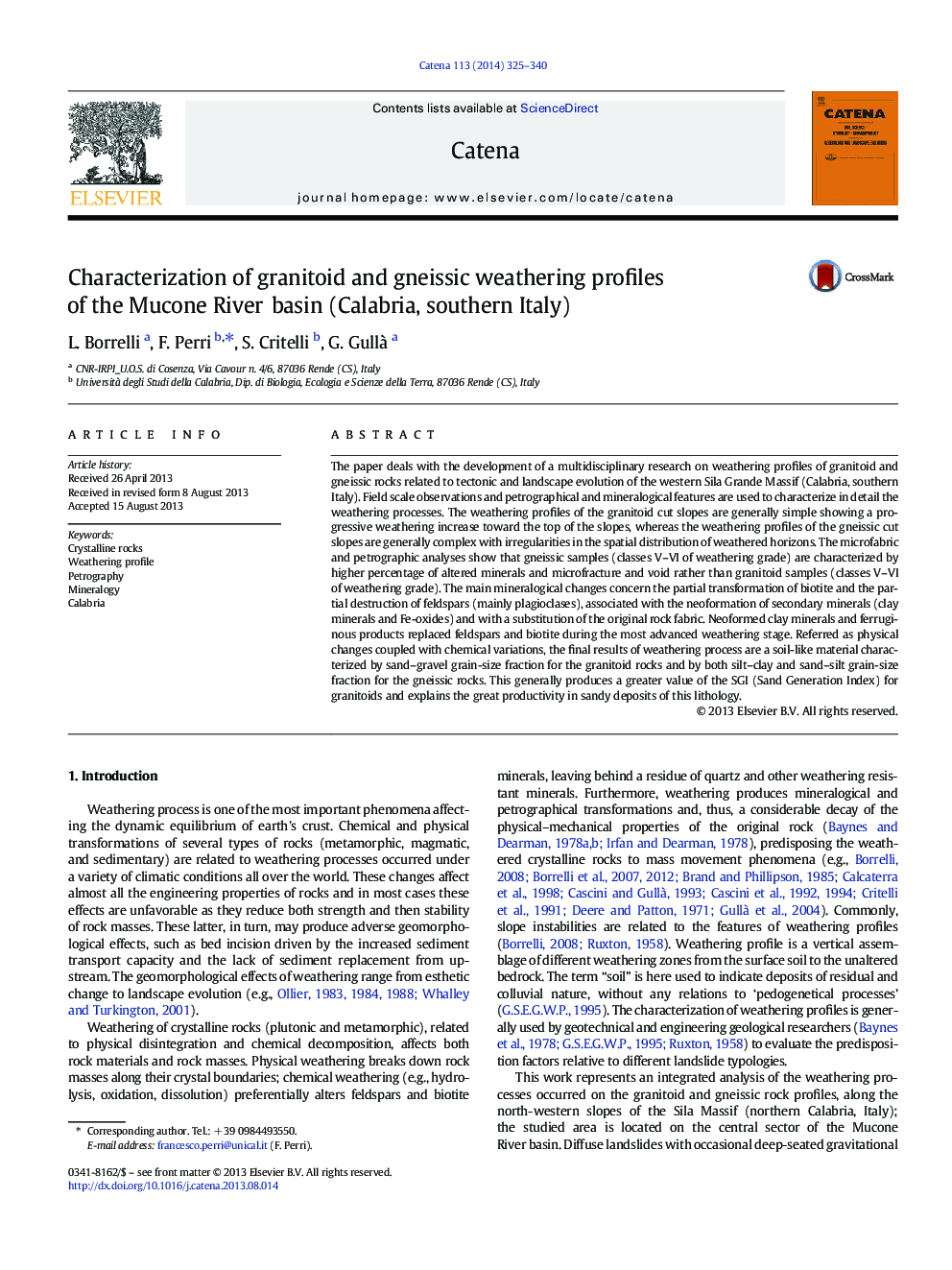| Article ID | Journal | Published Year | Pages | File Type |
|---|---|---|---|---|
| 4571538 | CATENA | 2014 | 16 Pages |
•The paper is focused on a multidisciplinary research on weathering profile stages.•We characterized changes from fresh rocks to residual soils of granitoids and gneiss.•Physical changes coupled with chemical variations are described in detail.•We characterized the response to the weathering processes of granitoids and gneiss.
The paper deals with the development of a multidisciplinary research on weathering profiles of granitoid and gneissic rocks related to tectonic and landscape evolution of the western Sila Grande Massif (Calabria, southern Italy). Field scale observations and petrographical and mineralogical features are used to characterize in detail the weathering processes. The weathering profiles of the granitoid cut slopes are generally simple showing a progressive weathering increase toward the top of the slopes, whereas the weathering profiles of the gneissic cut slopes are generally complex with irregularities in the spatial distribution of weathered horizons. The microfabric and petrographic analyses show that gneissic samples (classes V–VI of weathering grade) are characterized by higher percentage of altered minerals and microfracture and void rather than granitoid samples (classes V–VI of weathering grade). The main mineralogical changes concern the partial transformation of biotite and the partial destruction of feldspars (mainly plagioclases), associated with the neoformation of secondary minerals (clay minerals and Fe-oxides) and with a substitution of the original rock fabric. Neoformed clay minerals and ferruginous products replaced feldspars and biotite during the most advanced weathering stage. Referred as physical changes coupled with chemical variations, the final results of weathering process are a soil-like material characterized by sand–gravel grain-size fraction for the granitoid rocks and by both silt–clay and sand–silt grain-size fraction for the gneissic rocks. This generally produces a greater value of the SGI (Sand Generation Index) for granitoids and explains the great productivity in sandy deposits of this lithology.
